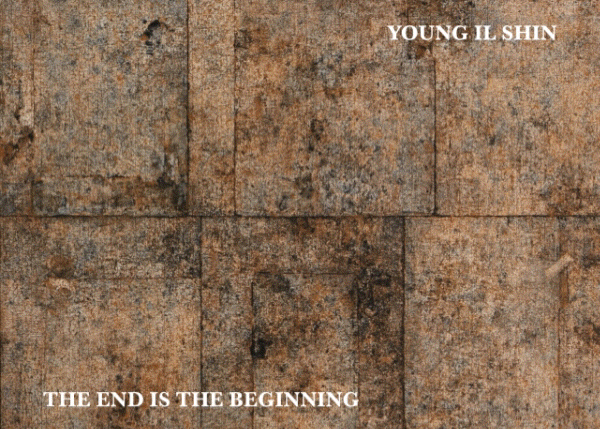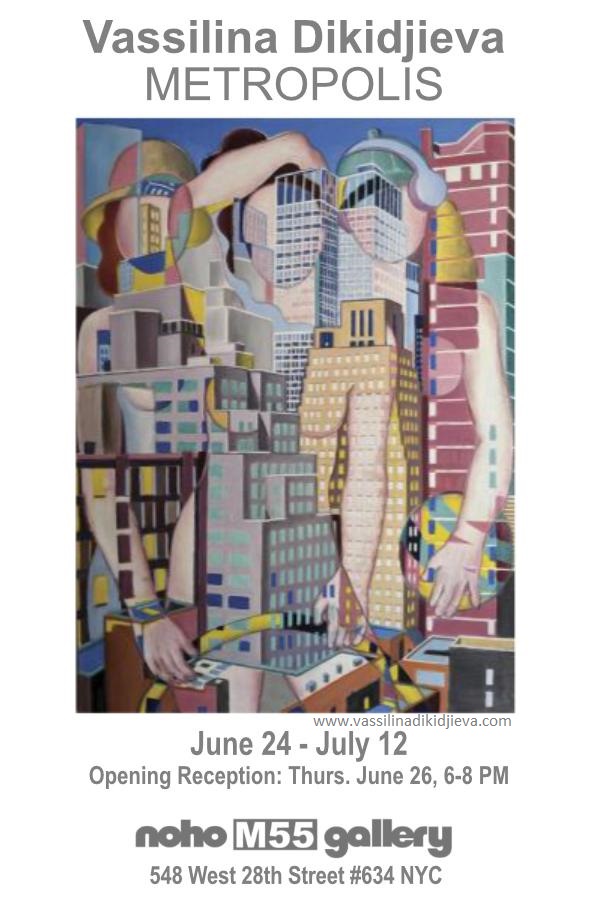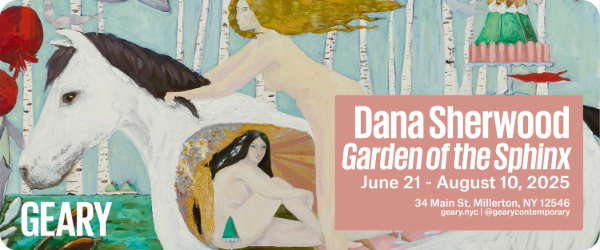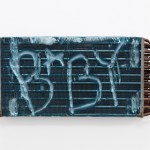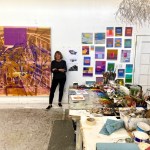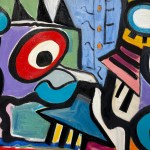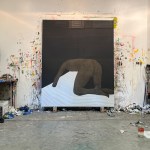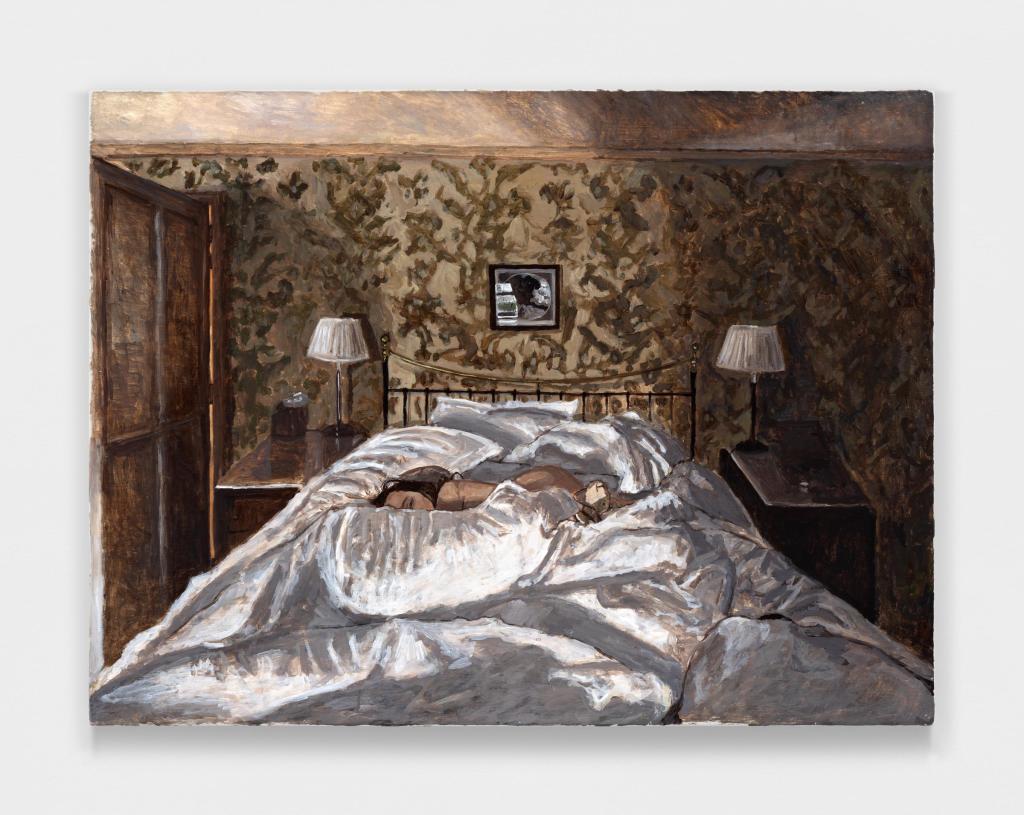
Contributed by Peter Schroth / Artist Polina Barskaya – born in Ukraine, raised in Brooklyn, now living in Italy – paints intimate portraits of domestic life. In “The Good Life,” her current exhibition at Harkawik, the life in question encompasses a self-contained triangle of father, daughter, and mother, the latter being the artist and observer. It’s hard to take such a title at face value – especially, perhaps, in light of current events. Except for one painting set in a courtyard, the strictly interior world of the home – be it a private residence or a hotel room – is depicted. Each scene is rendered within a symmetrically balanced box in one-point perspective and contains a central anchoring element. These snug spaces take on a womb-like character, suggesting not only nurture or shelter but also isolation.
From the outset, the viewer is disabused of any notions of sentimentality, as scenes of domestic unity and stability are presented with a sense of detachment. A discreet, low-key mood permeates the work, underlined by a strictly muted and rigidly consistent palette and the naturally dry appearance of acrylic paint. In keeping with this chromatic restraint, the abundant whites – whether in bedsheets or sunlight – are chilly, in a manner often associated with Scandinavian painters like Wilhelm Hammershøi. More saturated color appears only in discrete details: a book cover, pictures on a wall, a view out a window.
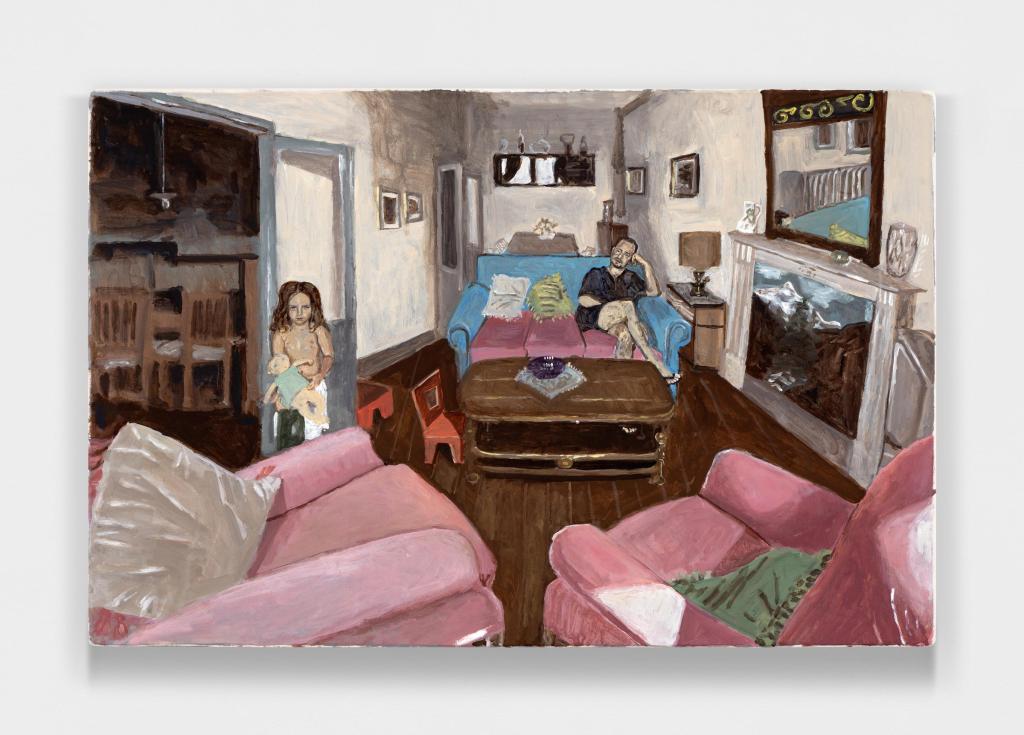
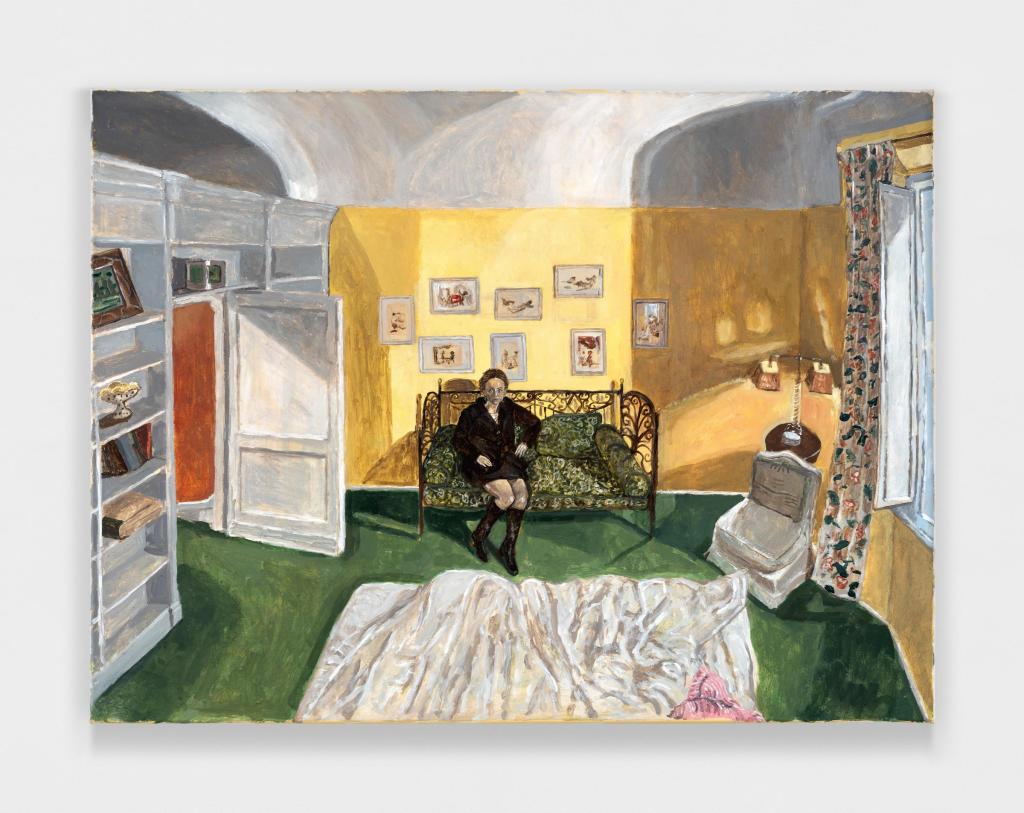
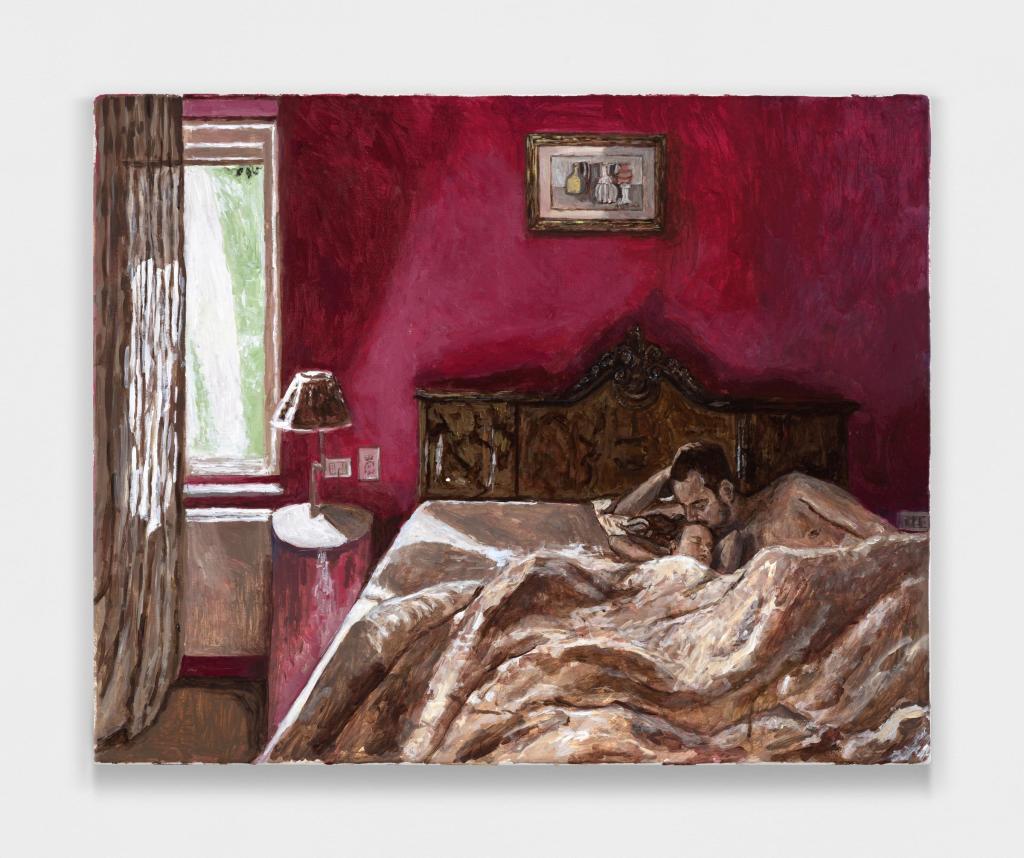
Barskaya seems to challenge Vuillard with her profusion of patterns, which appear in every work. Symbolic or ornamental, they often take the form of surging plant life. Even bedsheets mound like sea foam and crawl with vine-like folds. Crude paint handling is pointedly incongruous with the artist’s assured traditional skills, most evident in tiny portraits – Ukraine has a rich history of miniature painting – in which Barskaya slows down and fully articulates the features of the daughter. Over the course of the exhibition, a pervasive silence becomes apparent. We imagine no music and no laughter, just the ambient sounds of indoor life – footsteps, rustling drapes, a door closing – like the soundtrack of a film by Bergman or Akerman.
The daughter, Maya, is the clear hub of the family as well as the show, appearing in most works, often alone. She embodies freedom from urgency or obligation, tempered by precocity well beyond her years. When not interacting with another family member, she engages the viewer with a direct, fixed look. Her knowing eyes are disconcertingly adult even when peering slyly, unclothed, from within wads of bedding in Home House Morning. She seems to assert the right of the youngest among us to live in the nude. Her individual personhood is clearly expressed. While belonging, she stands entirely on her own, both following and leading.
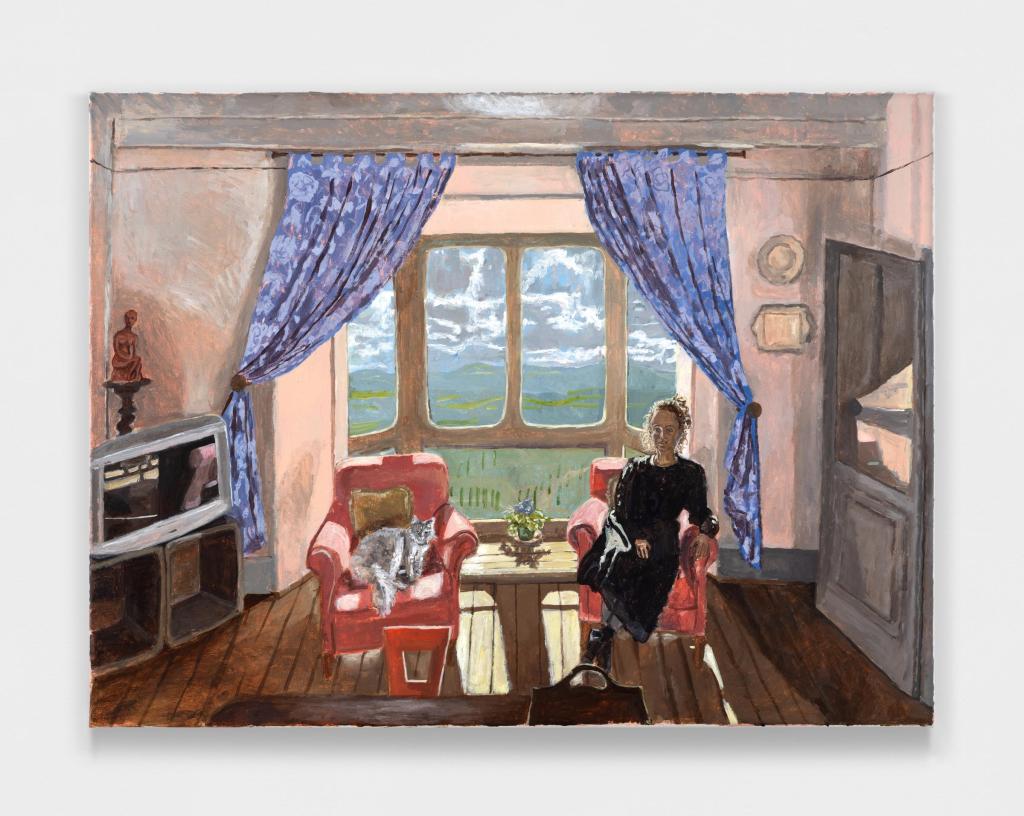
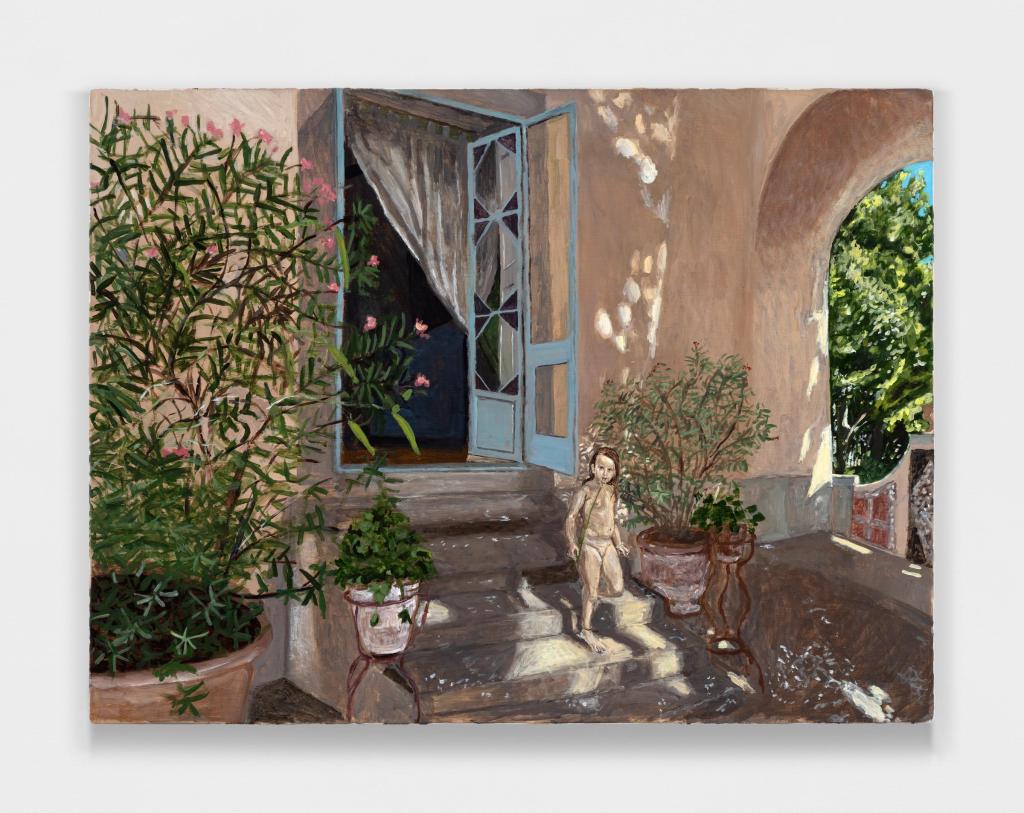
In Alex and Maya, the trio have gathered for a casual meal. Though the parents seem distracted, young Maya is collected and firmly focused on dining. She holds a doll that seems more a prop than a toy, her expression belying childish innocence. In the highly ambiguous Bologna, the father and daughter are in bed, unclothed, in an intimate posture. It may be no more than a moment of familial tenderness, yet they resemble lovers. To suppress that reading, one must also avoid noticing the deep, plum-colored walls of the boudoir.
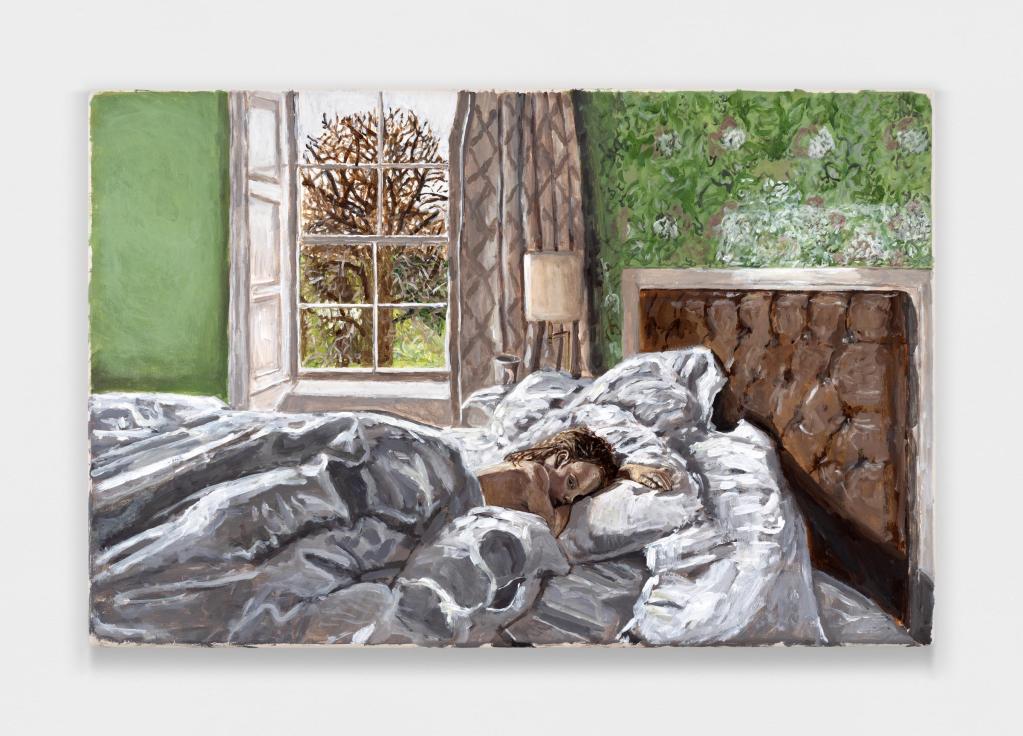
The exhibition concludes with portraits of solitary sitters, including the artist herself. Though more formally composed, these works – one is Self Portrait in Cortona – do not diverge in style or spirit from the rest. Removed from domestic settings, they strike a tone of emotional neutrality. Here, fully furnished rooms feel somewhat hollow, occupied by expressionless subjects and vacant of affect.
The artist allows us to witness her world as polite voyeurs. We are granted access to a “fine and private place” where the ordinariness of daily activity and family interaction is the event: rich in simplicity, devoid of ornament or incident.
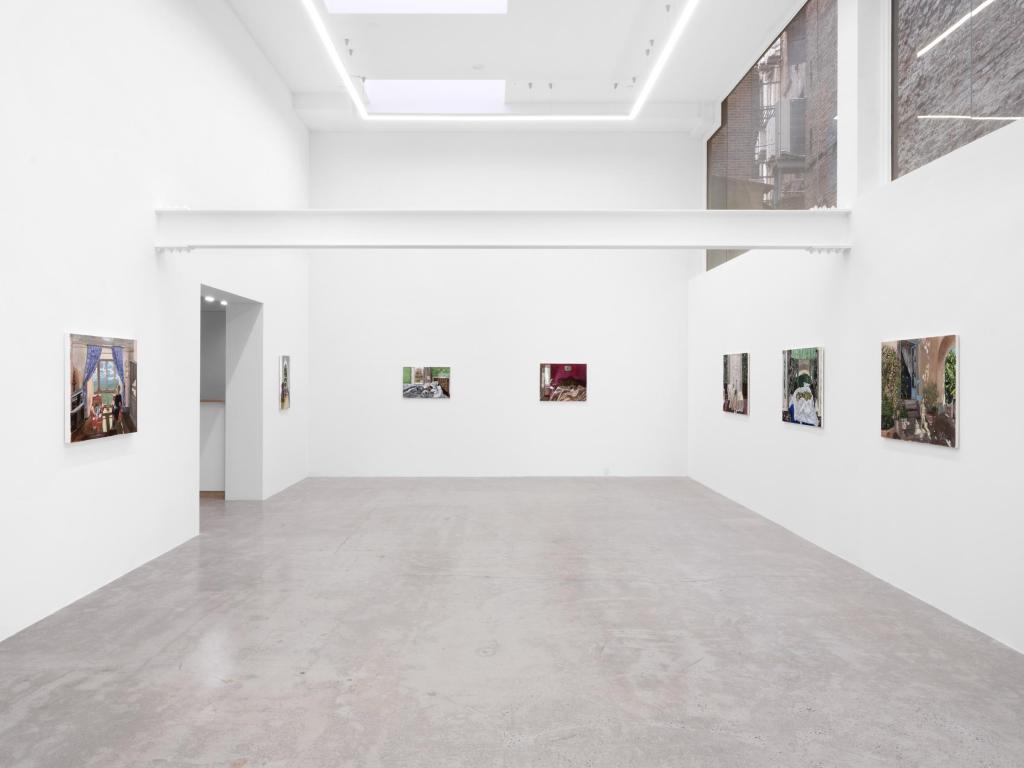
“Polina Barskaya: The Good Life,” Harkawik, 88 Walker Street, New York, NY. Through July 15, 2025.
About the author: Peter Schroth is a Brooklyn-based painter.


